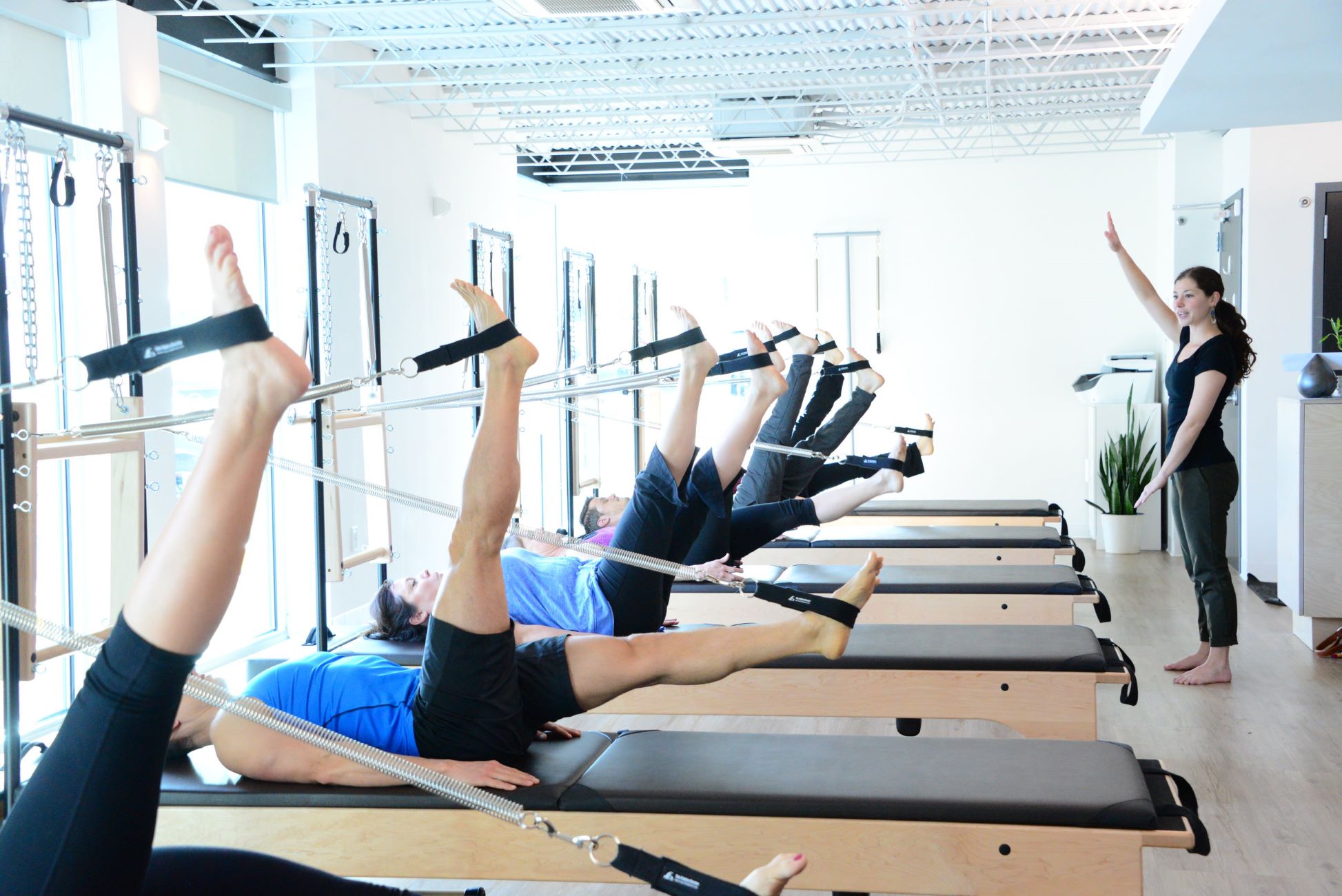Home>Training & Techniques>Cross-Training>The Benefits Of Weighted Hula Hooping For Runners


Cross-Training
The Benefits Of Weighted Hula Hooping For Runners
Published: February 20, 2024
Discover the advantages of weighted hula hooping as a cross-training activity for runners. Improve core strength and endurance with this fun and effective workout.
(Many of the links in this article redirect to a specific reviewed product. Your purchase of these products through affiliate links helps to generate commission for Therunningadvisor.com, at no extra cost. Learn more)
Table of Contents
- Introduction
- The Impact of Weighted Hula Hooping on Core Strength
- Improved Cardiovascular Endurance through Weighted Hula Hooping
- Enhanced Coordination and Balance for Runners
- Injury Prevention and Rehabilitation with Weighted Hula Hooping
- Incorporating Weighted Hula Hooping into Your Running Routine
- Conclusion: The Overall Benefits of Weighted Hula Hooping for Runners
Introduction
As a runner, you're likely familiar with the physical and mental demands of the sport. Whether you're training for a marathon, hitting the trails for a long run, or simply enjoying a leisurely jog, you understand the importance of maintaining strength, endurance, and balance. While traditional forms of cross-training such as cycling, swimming, and strength training are well-known, there's a unique and effective alternative that's gaining attention in the running community: weighted hula hooping.
Weighted hula hooping is not just a fun childhood pastime; it's a dynamic and engaging form of exercise that offers a myriad of benefits for runners. By incorporating a weighted hula hoop into your cross-training routine, you can enhance your core strength, improve cardiovascular endurance, refine coordination and balance, and even aid in injury prevention and rehabilitation. This article will delve into the specific ways in which weighted hula hooping can complement and elevate your running performance, providing a comprehensive understanding of its impact on your overall fitness.
Whether you're a seasoned marathoner or a casual runner, exploring the potential of weighted hula hooping can introduce a refreshing and effective dimension to your training regimen. By embracing this unconventional yet highly effective form of cross-training, you can unlock new levels of strength, agility, and resilience, ultimately enhancing your running experience and performance. So, let's embark on a journey to discover the remarkable benefits of weighted hula hooping for runners, and how it can revolutionize your approach to cross-training.
The Impact of Weighted Hula Hooping on Core Strength
Weighted hula hooping is a surprisingly effective way to strengthen your core muscles, which play a pivotal role in a runner's performance and overall well-being. As a runner, you rely on your core for stability, balance, and efficient movement. Engaging in weighted hula hooping can significantly enhance the strength and endurance of these essential muscles, ultimately benefiting your running performance in various ways.
When you hula hoop with added weight, your core muscles, including the abdominals, obliques, and lower back, are continuously engaged to maintain the rhythmic motion of the hoop. This sustained activation of the core muscles leads to gradual strengthening and toning, contributing to improved posture, stability, and overall body control. As a result, your running form can become more efficient, reducing the risk of fatigue and potential injuries.
Furthermore, the rotational movement involved in weighted hula hooping stimulates the deep core muscles, such as the transverse abdominis and the muscles around the spine. These muscles are crucial for maintaining spinal stability and preventing excessive movement during running, especially when navigating uneven terrain or enduring long distances. By strengthening these deep core muscles through hula hooping, you can enhance your body's ability to withstand the demands of running, leading to better overall performance and reduced strain on the lower back.
In addition to strengthening the core muscles, weighted hula hooping also promotes muscle endurance and coordination. The continuous and rhythmic nature of hula hooping encourages the core muscles to work in harmony, fostering improved coordination and neuromuscular control. This synchronization of muscle groups is highly beneficial for runners, as it can translate to more efficient and balanced movement patterns, ultimately optimizing running performance and reducing the likelihood of imbalances or asymmetries.
Incorporating weighted hula hooping into your cross-training routine can serve as a dynamic and engaging method to fortify your core strength, ultimately enhancing your running experience. By embracing this unconventional yet highly effective form of exercise, you can cultivate a robust and resilient core, leading to improved stability, endurance, and overall running performance.
Improved Cardiovascular Endurance through Weighted Hula Hooping
Weighted hula hooping offers a unique and effective way to enhance cardiovascular endurance, a critical component of a runner's overall fitness. While running is undoubtedly an exceptional cardiovascular workout, incorporating weighted hula hooping into your cross-training routine can further elevate your endurance capacity and contribute to improved cardiovascular health.
Engaging in weighted hula hooping involves continuous and rhythmic movement, which effectively elevates your heart rate and challenges your cardiovascular system. As you twirl the weighted hoop around your body, your heart and lungs work in unison to deliver oxygen-rich blood to the working muscles, thereby enhancing aerobic capacity and endurance. This sustained cardiovascular demand mirrors the physiological demands of running, making weighted hula hooping an ideal complementary exercise for runners seeking to boost their endurance levels.
Furthermore, the dynamic nature of weighted hula hooping encourages sustained movement of the large muscle groups, such as the legs, hips, and core, leading to increased energy expenditure and cardiovascular stimulation. This full-body engagement not only elevates your heart rate but also promotes efficient circulation and oxygen utilization, ultimately contributing to enhanced cardiovascular fitness.
Incorporating weighted hula hooping into your cross-training regimen can also serve as an effective form of interval training, a well-established method for improving cardiovascular endurance. By alternating between periods of vigorous hula hooping and active recovery, you can simulate the intensity fluctuations experienced during running, thereby challenging and strengthening your cardiovascular system. This variability in exertion levels can lead to improved heart rate recovery, enhanced oxygen uptake, and heightened endurance capacity, all of which are invaluable assets for runners aiming to elevate their performance.
Moreover, weighted hula hooping offers a low-impact yet highly effective cardiovascular workout, making it an accessible option for individuals seeking to minimize stress on their joints while still reaping the benefits of a challenging aerobic exercise. This aspect is particularly advantageous for runners looking to diversify their training without subjecting their bodies to excessive impact, ultimately contributing to overall joint health and longevity in their running pursuits.
By integrating weighted hula hooping into your cross-training routine, you can effectively enhance your cardiovascular endurance, elevate your aerobic capacity, and diversify your overall fitness regimen. This unique and engaging form of exercise offers a multitude of benefits for runners, ultimately contributing to improved cardiovascular health and enhanced endurance, thereby amplifying your running performance and overall well-being.
Enhanced Coordination and Balance for Runners
Enhanced coordination and balance are fundamental attributes that can significantly impact a runner's performance and overall running experience. Weighted hula hooping serves as an exceptional tool for refining these essential skills, offering a dynamic and engaging approach to improving coordination, proprioception, and balance, all of which are crucial for runners seeking to optimize their movement efficiency and reduce the risk of injuries.
When engaging in weighted hula hooping, the rhythmic and coordinated movement of the entire body is essential for sustaining the hoop's rotation. This continuous coordination between the upper and lower body, coupled with the engagement of the core muscles, fosters a heightened sense of body awareness and proprioception. As a result, individuals who regularly practice weighted hula hooping often experience improved spatial orientation and a greater ability to control and adjust their body movements, attributes that are directly transferable to running.
Furthermore, the rotational and rhythmic nature of hula hooping encourages bilateral coordination, requiring the simultaneous engagement of both sides of the body. This bilateral coordination is particularly beneficial for runners, as it can help address any existing asymmetries or imbalances in movement patterns, ultimately promoting more symmetrical and efficient running mechanics. By honing this synchronized movement through weighted hula hooping, runners can mitigate the risk of overuse injuries and enhance their overall running performance.
In addition to coordination, weighted hula hooping also contributes to the refinement of balance, a critical component for runners navigating varied terrains and challenging race courses. The dynamic and shifting nature of hula hooping demands continuous adjustments in body positioning and weight distribution, thereby enhancing proprioceptive feedback and balance control. This heightened awareness and stability can translate to improved running agility, especially when encountering uneven surfaces or unexpected obstacles.
Moreover, the engagement of stabilizing muscles during weighted hula hooping, including those in the legs, hips, and core, fosters improved dynamic balance and postural control. These attributes are invaluable for runners, as they can enhance overall stability and reduce the risk of falls or missteps, ultimately contributing to a more confident and resilient running experience.
By incorporating weighted hula hooping into your cross-training routine, you can effectively refine your coordination, proprioception, and balance, ultimately enhancing your running performance and reducing the likelihood of injuries. This engaging and dynamic form of exercise offers a holistic approach to improving fundamental movement skills, empowering runners to move with greater efficiency, stability, and confidence, thereby elevating their overall running experience.
Injury Prevention and Rehabilitation with Weighted Hula Hooping
In the realm of running, injury prevention and effective rehabilitation are paramount concerns for athletes of all levels. Weighted hula hooping presents a compelling avenue for both averting injuries and aiding in the recovery process, offering a multifaceted approach to enhancing musculoskeletal health and resilience.
One of the primary mechanisms through which weighted hula hooping contributes to injury prevention is by fortifying the stabilizing muscles throughout the body. As runners, the repetitive nature of our sport can predispose us to overuse injuries and muscular imbalances. Engaging in weighted hula hooping prompts the activation of a diverse array of muscles, including those in the core, hips, and lower body, which are crucial for maintaining stability and absorbing impact during running. By strengthening these stabilizing muscles, hula hooping can help mitigate the risk of common running-related injuries, such as IT band syndrome, patellofemoral pain syndrome, and shin splints, among others.
Moreover, the rhythmic and dynamic nature of weighted hula hooping fosters improved joint mobility and flexibility, attributes that are instrumental in injury prevention and rehabilitation. The rotational movement of hula hooping engages the hips, spine, and shoulders in a fluid and coordinated manner, promoting enhanced range of motion and suppleness in these pivotal areas. For runners, this enhanced joint mobility can alleviate undue stress on the musculoskeletal system, reducing the likelihood of strains, sprains, and other soft tissue injuries. Additionally, for individuals recovering from injuries, the controlled and low-impact nature of hula hooping can serve as a gentle yet effective means of restoring joint mobility and function, facilitating the rehabilitation process.
Furthermore, weighted hula hooping offers a unique platform for enhancing proprioception and neuromuscular control, both of which are integral for injury prevention and rehabilitation. The intricate coordination and balance required during hula hooping stimulate proprioceptive feedback and refine motor control, attributes that are invaluable for maintaining proper form and technique while running. By honing these neuromuscular skills through hula hooping, runners can reduce the likelihood of missteps, falls, and other accidents, ultimately minimizing the risk of traumatic injuries.
In the realm of injury rehabilitation, weighted hula hooping can serve as a gentle yet effective modality for restoring strength, coordination, and mobility following an injury. The low-impact nature of hula hooping minimizes stress on injured tissues while promoting gradual and controlled muscle engagement, making it an accessible and engaging form of rehabilitation for runners aiming to regain their fitness and resilience.
Incorporating weighted hula hooping into your cross-training routine can thus significantly contribute to injury prevention and rehabilitation, offering a holistic approach to fortifying musculoskeletal health, enhancing joint mobility, and refining neuromuscular control. By embracing this dynamic and multifaceted form of exercise, runners can proactively safeguard themselves against injuries and expedite their recovery process, ultimately fostering a more sustainable and resilient running experience.
Incorporating Weighted Hula Hooping into Your Running Routine
Integrating weighted hula hooping into your running routine can introduce a dynamic and engaging dimension to your cross-training regimen, offering a multitude of benefits that can significantly enhance your overall fitness and running performance. Whether you're a novice runner aiming to diversify your workouts or a seasoned athlete seeking to elevate your training, the incorporation of weighted hula hooping can yield remarkable advantages that extend beyond traditional forms of cross-training.
To seamlessly integrate weighted hula hooping into your running routine, consider allocating dedicated sessions for hula hooping on non-running days or incorporating it as a stimulating warm-up or cooldown activity. By strategically scheduling hula hooping sessions alongside your running workouts, you can optimize the synergistic benefits of both activities, fostering a well-rounded approach to your fitness regimen.
When embarking on your hula hooping journey, it's essential to select an appropriately weighted hoop that aligns with your fitness level and goals. Beginners may benefit from starting with a moderately weighted hoop to acclimate to the rhythmic motion, while experienced individuals can explore heavier options to intensify the workout. Additionally, ensuring proper form and technique during hula hooping is crucial for maximizing its benefits. Engage your core muscles, maintain an upright posture, and focus on smooth and controlled movements to optimize the strengthening and coordination aspects of the exercise.
Furthermore, consider incorporating interval training principles into your hula hooping sessions, alternating between periods of sustained hooping and active recovery. This approach mirrors the intensity fluctuations experienced during running, effectively challenging your cardiovascular system and enhancing endurance capacity. By integrating interval-based hula hooping sessions into your running routine, you can cultivate a more robust cardiovascular foundation and elevate your overall endurance levels, ultimately benefiting your running performance.
In addition to standalone hula hooping sessions, consider integrating hula hooping drills and exercises into your dynamic warm-up routine before a run. This can serve as an effective preparatory activity, activating the core muscles, refining coordination, and priming the cardiovascular system for the ensuing run. Similarly, incorporating hula hooping into your post-run cooldown can facilitate muscle recovery, enhance flexibility, and promote relaxation, contributing to a comprehensive and balanced running routine.
By embracing the incorporation of weighted hula hooping into your running routine, you can diversify your cross-training regimen, fortify your core strength, enhance cardiovascular endurance, refine coordination and balance, and proactively mitigate the risk of injuries. This holistic approach to cross-training can elevate your overall fitness, amplify your running performance, and imbue your training journey with a sense of novelty and excitement, ultimately empowering you to reach new heights in your running pursuits.
Conclusion: The Overall Benefits of Weighted Hula Hooping for Runners
Incorporating weighted hula hooping into a runner's cross-training regimen offers a multifaceted approach to enhancing overall fitness and performance. This dynamic and engaging form of exercise yields a myriad of benefits that directly complement and elevate the running experience. From fortifying core strength and improving cardiovascular endurance to refining coordination, balance, and aiding in injury prevention and rehabilitation, weighted hula hooping stands as a versatile and effective tool for runners of all levels.
By engaging in weighted hula hooping, runners can cultivate a robust and resilient core, essential for maintaining stability, posture, and efficient movement during running. The sustained activation of core muscles during hula hooping contributes to improved body control, reducing the risk of fatigue and potential injuries. Additionally, the rotational movement involved in hula hooping stimulates deep core muscles, fostering enhanced spinal stability and reducing strain on the lower back, ultimately optimizing running performance.
Furthermore, weighted hula hooping serves as a unique avenue for enhancing cardiovascular endurance, a critical component of a runner's overall fitness. The rhythmic and continuous movement of hula hooping effectively elevates heart rate and challenges the cardiovascular system, mirroring the physiological demands of running. This form of exercise also offers a low-impact yet highly effective cardiovascular workout, making it accessible for individuals seeking to diversify their training without subjecting their bodies to excessive impact, ultimately contributing to overall joint health and longevity in their running pursuits.
Moreover, the intricate coordination and balance required during weighted hula hooping directly translate to improved spatial orientation, body control, and refined movement patterns, all of which are invaluable for runners seeking to optimize their running efficiency and reduce the risk of injuries. The dynamic and shifting nature of hula hooping demands continuous adjustments in body positioning and weight distribution, fostering enhanced proprioceptive feedback and balance control, attributes that are instrumental for navigating varied terrains and challenging race courses.
In the realm of injury prevention and rehabilitation, weighted hula hooping offers a multifaceted approach to fortifying musculoskeletal health, enhancing joint mobility, and refining neuromuscular control. By embracing this dynamic and multifaceted form of exercise, runners can proactively safeguard themselves against injuries and expedite their recovery process, ultimately fostering a more sustainable and resilient running experience.
In conclusion, the incorporation of weighted hula hooping into a runner's training regimen presents a holistic and effective approach to enhancing core strength, cardiovascular endurance, coordination, balance, and injury resilience. By embracing this unconventional yet highly effective form of cross-training, runners can unlock new levels of strength, agility, and resilience, ultimately enhancing their running experience and performance.















